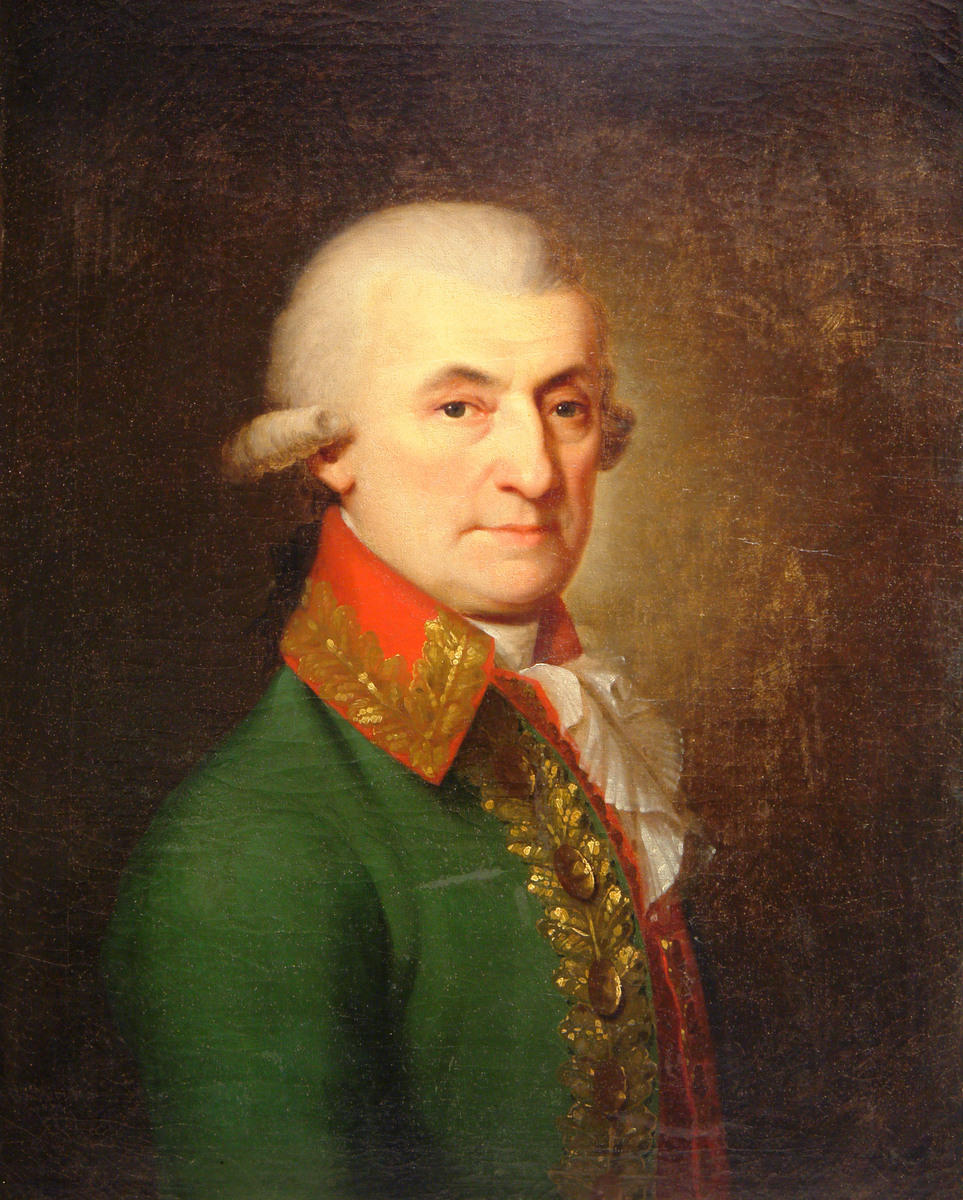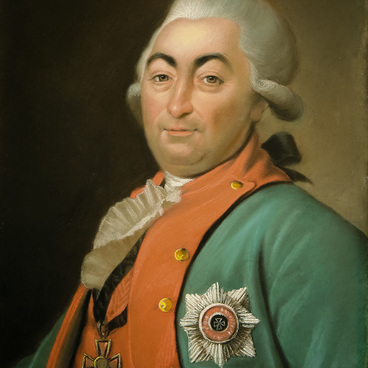The Russian portrait of the second half of the 18th century depicting aristocrats is an outstanding phenomenon in art. The Baroque and Rococo styles were replaced by Classicism. It was widely popular among the nobility both in architecture and in painting, primarily in the portrait genre. One of the important features of the classical tradition is the interest in antiquity.
The half-length portrait in the classical style from the collection of the Kaluga Museum of Fine Arts depicts Gavriil Petrovich Bakhmetev. It was created by an unknown artist. The large stone Transfiguration Church in the village of Nizhny Pryski near Kozelsk, which was completed by Gavriil Petrovich Bakhmetev in 1787, was also built in the classical tradition.
Gavriil Petrovich Bakhmetev was born in the first third of the 18th century. In his youth he was a page. Then he was in military service in army regiments, commanded a Moscow infantry regiment and participated in the Russo-Turkish War, after which he retired in the rank of Major General. He married Alexandra Nikolaevna, nee Rtischeva, and lived in her estate Nizhny Pryski, in the Kozelsky district. Bakhmetev took an active part in the construction of the estate, where a three-story stone house with a terrace and outbuildings, as well as service buildings, was erected. As already mentioned, he also built a stone church.
From December 12, 1785 to January 11, 1792, Gavriil Petrovich Bakhmetev was the Kaluga Governorate representative of the nobility. Apparently, the portrait was also created in that period. He is depicted in three-quarter-view, wearing a wig, in a dark green half-buttoned caftan embroidered with gold. The work is distinguished by great pictorial qualities, indicating that it was painted by a St. Petersburg academician. The portrait presents a wise landowner with a firm character, an energetic man. The unique style of the portraitist could probably help determine the history of the portrait in the future. It is advantageously distinguished among many canvases painted by unknown and forgotten portraitists of that era.
The half-length portrait in the classical style from the collection of the Kaluga Museum of Fine Arts depicts Gavriil Petrovich Bakhmetev. It was created by an unknown artist. The large stone Transfiguration Church in the village of Nizhny Pryski near Kozelsk, which was completed by Gavriil Petrovich Bakhmetev in 1787, was also built in the classical tradition.
Gavriil Petrovich Bakhmetev was born in the first third of the 18th century. In his youth he was a page. Then he was in military service in army regiments, commanded a Moscow infantry regiment and participated in the Russo-Turkish War, after which he retired in the rank of Major General. He married Alexandra Nikolaevna, nee Rtischeva, and lived in her estate Nizhny Pryski, in the Kozelsky district. Bakhmetev took an active part in the construction of the estate, where a three-story stone house with a terrace and outbuildings, as well as service buildings, was erected. As already mentioned, he also built a stone church.
From December 12, 1785 to January 11, 1792, Gavriil Petrovich Bakhmetev was the Kaluga Governorate representative of the nobility. Apparently, the portrait was also created in that period. He is depicted in three-quarter-view, wearing a wig, in a dark green half-buttoned caftan embroidered with gold. The work is distinguished by great pictorial qualities, indicating that it was painted by a St. Petersburg academician. The portrait presents a wise landowner with a firm character, an energetic man. The unique style of the portraitist could probably help determine the history of the portrait in the future. It is advantageously distinguished among many canvases painted by unknown and forgotten portraitists of that era.



